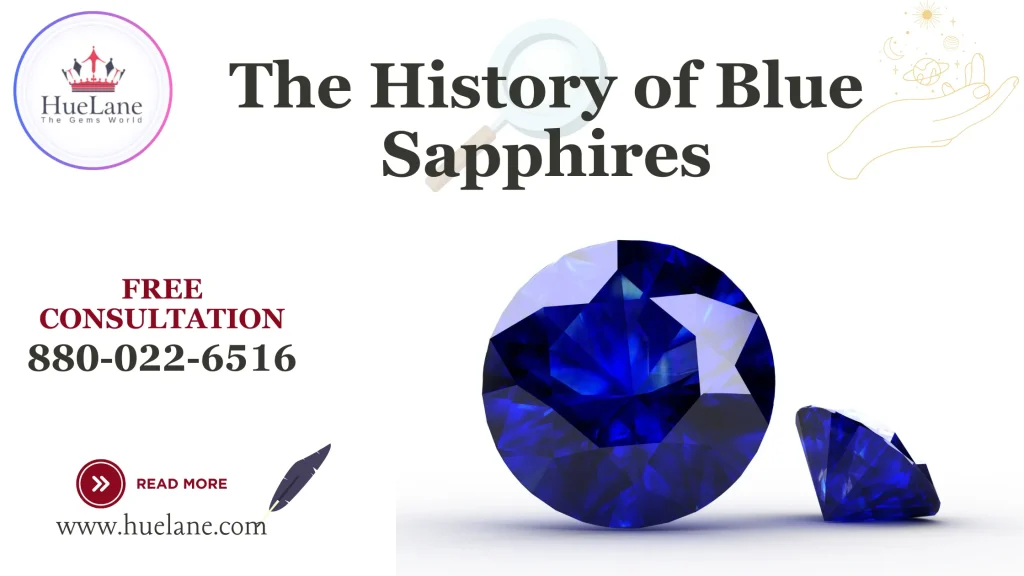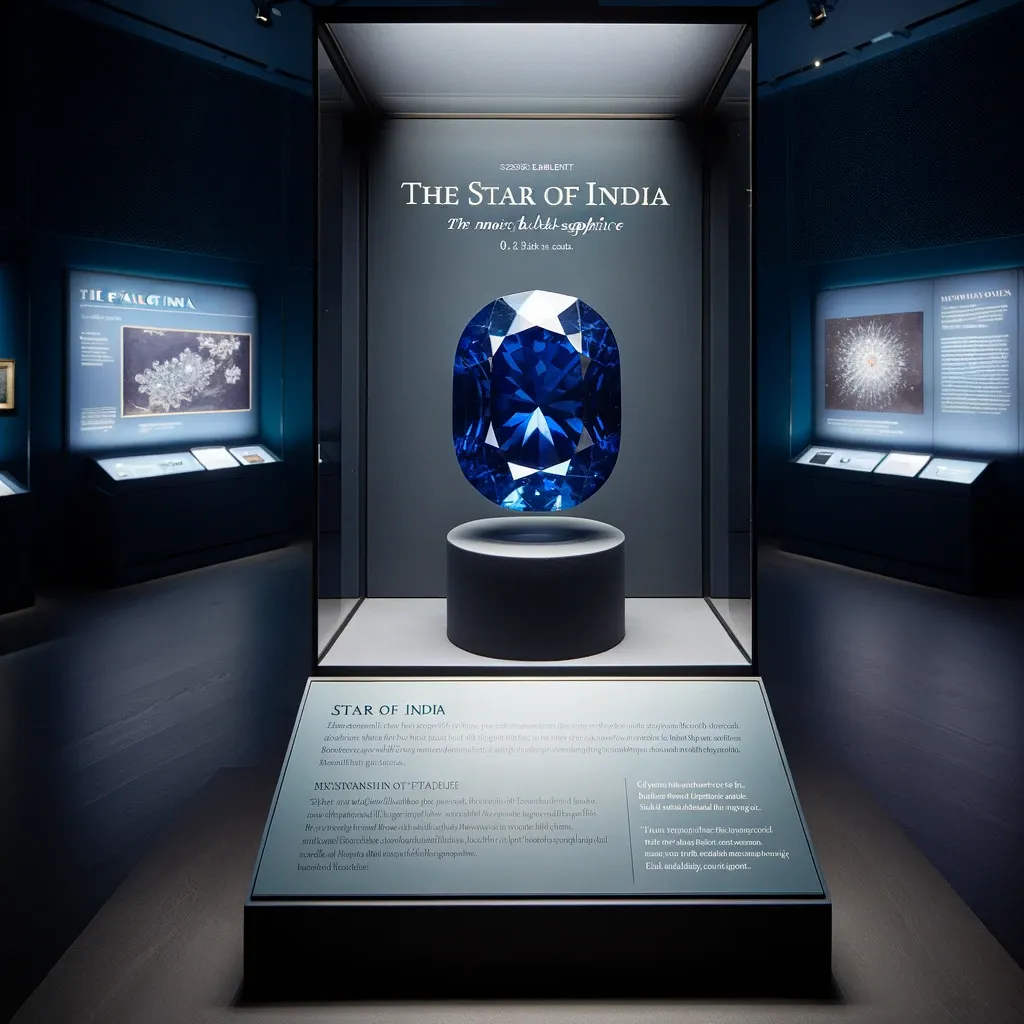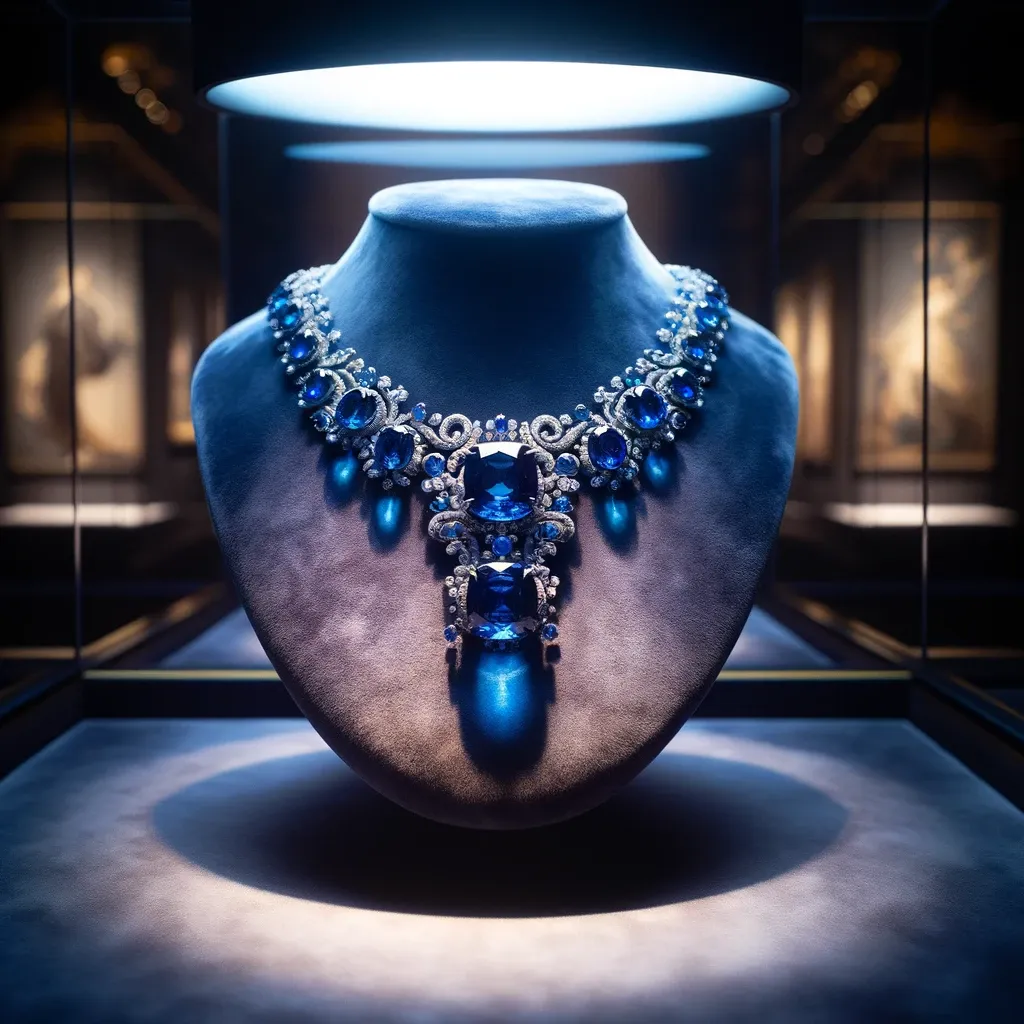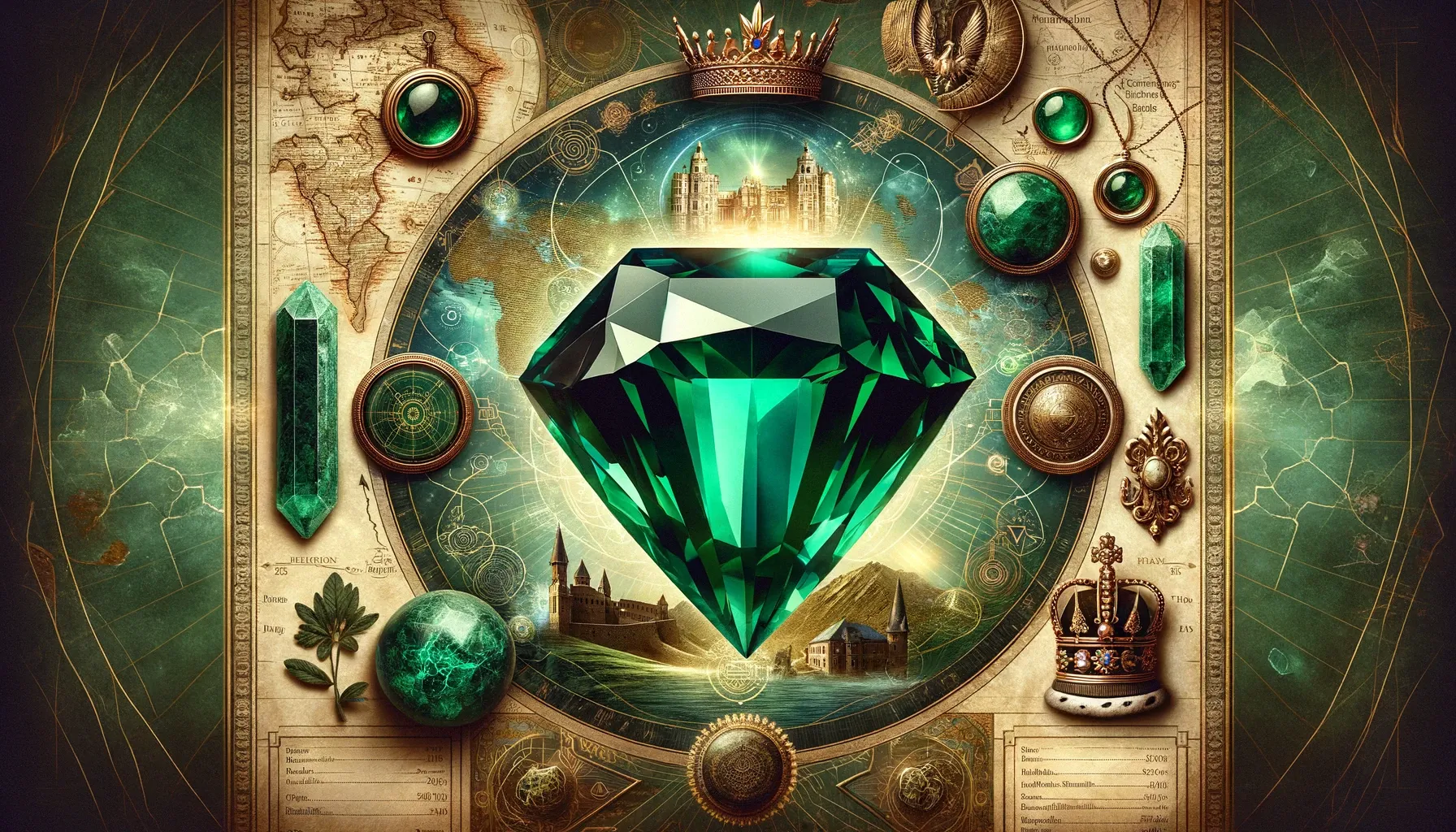Blue sapphires are really special gems. Their amazing deep blue color has made people love them for thousands of years. These aren’t just pretty stones; they have a lot of history behind them. They come from old mines in places like Sri Lanka and have been around since the days of kings and queens. Even now, you can find them in jewelry stores, shining just as brightly. Each blue sapphire has its own story of mystery and beauty.
Table of Contents
History of Blue Sapphires
This blog, “Gem of the Ages: Exploring the Rich History of Blue Sapphires,” aims to take you on a journey back in time. We’ll explore the geological formation of these precious stones, their historical significance across various cultures, and their evolution in both value and meaning. From legendary sapphires that shaped dynasties to the technological advances in mining and cutting these gems, we’ll uncover how blue sapphires have become a symbol of both beauty and strength.
As we delve into the heart of these azure treasures, we’ll discover their significance in art, religion, and politics. This is not just the story of a gemstone; it’s a window into the history of civilization, reflecting our changing tastes, technologies, and ideologies. So, let’s embark on this fascinating journey through the ages, exploring the rich and colorful history of blue sapphires.
Origins and Geological Formation
Blue sapphires, a variety of the mineral corundum, owe their alluring color to the presence of trace elements like iron and titanium. These gems form under unique geological conditions, typically in regions where ancient tectonic activity has occurred. The formation process begins deep within the Earth’s crust, where high temperatures and pressures cause these elements to crystallize over millions of years.
Interestingly, the specific conditions under which sapphires form can vary greatly, leading to a wide range of colors and qualities. For instance, the presence of beryllium can result in sapphires with a more vibrant hue. It’s this geological diversity that contributes to the uniqueness of each sapphire, making them not just gems but also geological storytellers.
Historical Mining Sites
The history of blue sapphire mining is as old as civilization itself. One of the most famous historical mining sites is in Ceylon (modern-day Sri Lanka). These mines have been known since ancient times and were a significant source of sapphires for many cultures. In Ceylon, miners used traditional methods, digging pits and tunnels by hand, a testament to the human effort in unearthing these hidden treasures.

Another notable site is in Kashmir, India, where sapphires were discovered accidentally by a landslide in the 19th century. These sapphires are renowned for their unique velvety texture and intense color. However, the harsh geographical conditions made mining difficult, adding to the rarity and mystique of Kashmir sapphires.
These historical sites not only highlight the geographic spread of sapphire deposits but also reflect the human ingenuity and persistence in extracting these gems from the depths of the earth.
Cultural and Historical Significance
Blue sapphires have been revered since ancient times, not just for their beauty, but also for what they symbolized. In ancient Persia, rulers believed the sky was painted blue by the reflection of sapphire stones. This belief in the divine connection of sapphires was not limited to Persia; many cultures associated them with heavenly bodies and gods.
In Greek and Roman societies, sapphires were worn as protection from harm and envy. They were also seen as symbols of wisdom and purity. This tradition carried over into the Middle Ages in Europe, where clergy would wear sapphire jewelry as a symbol of heaven.
Royal and Religious Influences
The affinity for blue sapphires transcended into royal and religious realms. Kings and queens adorned themselves with these gems, believing in their powers to protect and guide. The British Crown Jewels, for instance, feature several prominent sapphires, symbolizing wisdom and purity.
In religious contexts, the sapphire was often seen as a symbol of divine favor. It adorned various religious artifacts and was mentioned in several religious texts, highlighting its significance across different faiths.
This deep cultural and historical significance of blue sapphires has cemented their status not just as jewels but as artifacts of human history, embodying the beliefs, values, and aesthetics of civilizations past.
Famous Blue Sapphires and Their Stories
Some blue sapphires have become nearly as famous as the people who wore them. Perhaps the most renowned is the “Star of India,” a staggering 563-carat star sapphire. Known for its size and astonishing clarity, this gemstone is over two billion years old and is famed for its striking star pattern. It currently resides in the American Museum of Natural History in New York.

Another legendary sapphire is the “Logan Sapphire,” one of the world’s largest and heaviest blue sapphires, weighing in at 422.99 carats. Its rich history and size make it a standout piece, currently showcased in the National Museum of Natural History in Washington, D.C.
Tales of Intrigue and Opulence
The history of these sapphires is filled with tales of intrigue, theft, and recovery, adding to their mystique. For example, the “Star of India” was famously stolen in a daring heist in 1964 and recovered shortly after in a dramatic turn of events.
These stories highlight not only the value of the gems themselves but also the allure they hold in human imagination. They are not merely beautiful objects; they are symbols of human fascination with beauty, rarity, and the exotic.
The Evolution of Sapphire Mining and Trade
The methods used to mine blue sapphires have evolved dramatically over centuries. From the ancient hand-dug pits in Ceylon and Kashmir to the large-scale operations seen today, the journey of sapphire mining is a tale of technological advancement. In modern times, mining for sapphires often involves advanced machinery and sophisticated techniques that increase efficiency and minimize environmental impact.
Today, countries like Madagascar, Australia, and Thailand have become key players in the sapphire mining industry, utilizing both open-pit and underground mining methods. These modern techniques allow for the extraction of sapphires on a much larger scale, meeting the growing global demand for these precious stones.
Global Trade and the Journey of Blue Sapphires
The trade of blue sapphires has also undergone significant changes. Historically, the trade routes were limited and often perilous, with sapphires passing through multiple hands before reaching their final destination. In contemporary times, the global trade of sapphires is a more streamlined and regulated process, involving a network of miners, dealers, and jewelers across the world.
This evolution in mining and trade reflects not only advancements in technology and commerce but also changes in social, economic, and environmental attitudes. As the world becomes more interconnected, the journey of a blue sapphire from mine to market becomes a testament to human ingenuity and global cooperation.
Contemporary Significance and Uses
Today, blue sapphires continue to be a cornerstone in the world of fine jewelry. Their timeless elegance makes them a popular choice for engagement rings, necklaces, and other pieces of high-value jewelry. With modern cutting and polishing techniques, the true beauty of these gems is brought to life, showcasing their deep blues and brilliant sparkles.

Designers often combine sapphires with other precious stones to create unique and captivating pieces. The versatility of sapphires allows them to fit seamlessly into both traditional and contemporary designs, making them a favorite among jewelry connoisseurs and fashion enthusiasts alike.
Beyond Beauty
Aside from their aesthetic appeal, blue sapphires have significant industrial and scientific applications. Due to their exceptional hardness, sapphires are used in various industrial tools, including cutting implements and high-durability windows.
In the realm of science, synthetic sapphire crystals are used in a range of applications, from electronic substrates to components in wristwatches and optical devices. Their durability and resistance to environmental factors make them ideal for use in harsh or precise conditions.
This multifaceted nature of blue sapphires, spanning from artistic expression to practical application, highlights their enduring relevance and importance in modern society.
FAQs About Blue Sapphire
How are blue sapphires formed?
They form under special conditions deep in the Earth with lots of heat and pressure.
Why are blue sapphires so special?
They form under special conditions deep in the Earth with lots of heat and pressure.
Where can you find blue sapphires?
You can find blue sapphires in many places around the world, like Sri Lanka, India, Madagascar, Australia, and Thailand. Sapphires from each place look a bit different.
How are blue sapphires used in jewelry today?
You can find blue sapphires in many places around the world, like Sri Lanka, India, Madagascar, Australia, and Thailand. Sapphires from each place look a bit different.
What are some famous blue sapphires?
Some well-known blue sapphires are the “Star of India,” famous for its star pattern, and the “Logan Sapphire,” which is one of the biggest blue sapphires.
Conclusion
As we conclude our journey through the fascinating history of blue sapphires, it’s clear why these gems have held such an enduring allure. From their geological formation billions of years ago to their revered status in ancient cultures, and their continued significance in modern society, blue sapphires have been a symbol of beauty, power, and human ingenuity. Their story is not just about a precious gemstone but about the tapestry of human history itself, interwoven with tales of discovery, artistry, and advancement. The legacy of blue sapphires continues to captivate us, promising to enchant future generations with their timeless mystique.
Follow us on Instagram Page : huelane_gemstone




